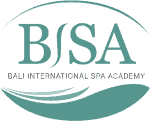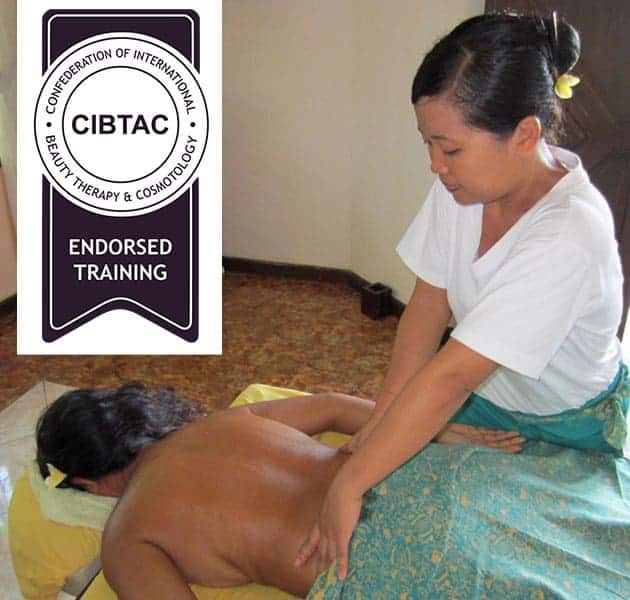15 Days CIBTAC Certificate in Body (Swedish) Massage + CIBTAC Endorsed Balinese Massage
Price: $2433.00
Upgrade to receive a CIBTAC qualification
Exam date: October 2024 | Registration for these exams will be open from April 2024 to July 2024 |
Saturday and Sunday time to enjoy all the splendours Bali has to offer
“The Island of the Gods”
Pre- requisite for all Bali BISA CIBTAC Endorsed Programs: CIBTAC Certificate in Body Massage
Price Includes:
- Monitor & Maintain Health & Safety in the Spa//Salon
- Provide Body Massage (Swedish)
- Anatomy & Physiology Home study
- Balinese Massage
- Training Manuals
- Balinese Massage Training Video
- Swedish Massage Training Video
- Clients for your practical sessions
- CIBTAC Endorsed Certificate for Balinese Massage
- CIBTAC Certificate for Certificate in Swedish Massage
Who is this course for?
Given that no previous experience is necessary, this program is suitable for beginners who are interested in learning and mastering these massage techniques and gaining a foundational understanding of anatomy and physiology. If your goal is to pursue a career in Massage Therapy or simply want to acquire new skills for personal enrichment and well-being. This is a great starting point for you.
Contact us for more information
Read more about Balinese Massage, Swedish Massage, and Anatomy & Physiology
In this CIBTAC Endorsed Balinese Massage Course students will learn the time-honored natural ingredients and bodywork methods passed down through generations.
Balinese Massage is rapidly becoming one of the world’s most popular treatments given its centuries-old traditions that have nurtured the Balinese people’s ability to retain their healthy inner glow and radiant skin. It consists of a combination of different techniques from various cultures that the Balinese people have adapted to create their own unique style. Formerly known as the ‘Spice Islands’, many merchant ships brought their own massage and healing traditions to Java’s royal palaces. From the Indian Hindu influence, Ayurveda healing techniques for massage, oils and herbs were introduced. From China came Buddhism and acupressure techniques. It currently incorporates 12 strokes which makes it so fascinating to study, give and receive.
Swedish Massage: is one of the most well-known and widely practiced forms of massage therapy. It was developed in the 19th century by a Swedish physiologist named Per Henrik Ling. The primary goal of Swedish Massage is to relax the entire body by applying pressure to muscles and joints through a series of long, gliding strokes, kneading, and friction techniques.
Key components of Swedish Massage include:
- Effleurage: Long, sweeping strokes that help warm up the muscles and promote relaxation.
- Petrissage: Kneading and squeezing of the muscles, which helps in releasing tension and improving circulation.
- Friction: Circular or cross-fiber rubbing to create heat and increase blood flow to specific areas.
- Tapotement: Rhythmic tapping, chopping, or pounding motions, often used to stimulate and invigorate the muscles.
- Vibration or Shaking: Trembling movements that aim to loosen and relax muscles.
Swedish Massage is not only used for stress relief and relaxation but also for addressing specific muscle issues and promoting overall well-being. It’s a versatile form of massage that can be adjusted to suit various needs and preferences, making it a popular choice in spas, wellness centers, and therapeutic settings.
Anatomy and Physiology: Understanding the human body’s structure (anatomy) and how its parts function (physiology) is crucial for anyone involved in massage therapy. This knowledge helps in providing safe and effective massages.
Anatomy and Physiology in Massage Therapy: are foundational sciences that play a crucial role in the field of massage therapy. Here’s why they are essential:
Understanding the Body’s Structure (Anatomy):
- Musculoskeletal System: Knowledge of muscles, bones, joints, and connective tissues is vital. Massage therapists need to know the location and function of different muscles to target specific areas effectively.
- Nervous System: Understanding how nerves are distributed throughout the body helps therapists be mindful of sensitive areas and nerves during massage, ensuring safety and avoiding discomfort for the client.
- Circulatory System: Knowledge of blood vessels and how blood circulates is essential for understanding the impact of massage on circulation and overall cardiovascular health.
Understanding How Body Parts Function (Physiology):
- Muscle Function: Understanding how muscles contract, relax, and work together is crucial for providing effective massages and addressing muscle-related issues.
- Nervous System Function: Knowing how the nervous system operates helps in tailoring massages to promote relaxation or stimulate specific responses.
- Circulatory System Function: Awareness of how massage affects blood flow and lymphatic drainage is essential for promoting overall well-being.
Safety and Effectiveness:
- Preventing Injury: A solid understanding of anatomy helps massage therapists avoid causing harm or injury to clients. They can navigate around vulnerable areas and adjust techniques based on individual anatomy.
- Customizing Massages: Knowledge of physiology allows therapists to customize massages to address specific concerns or conditions, such as muscle tension, joint issues, or circulatory problems.
In summary, a strong foundation in Anatomy and Physiology is fundamental for massage therapists to provide safe, effective, and client-specific treatments. It enhances their ability to assess, plan, and execute massages that contribute to the overall health and well-being of their clients.


